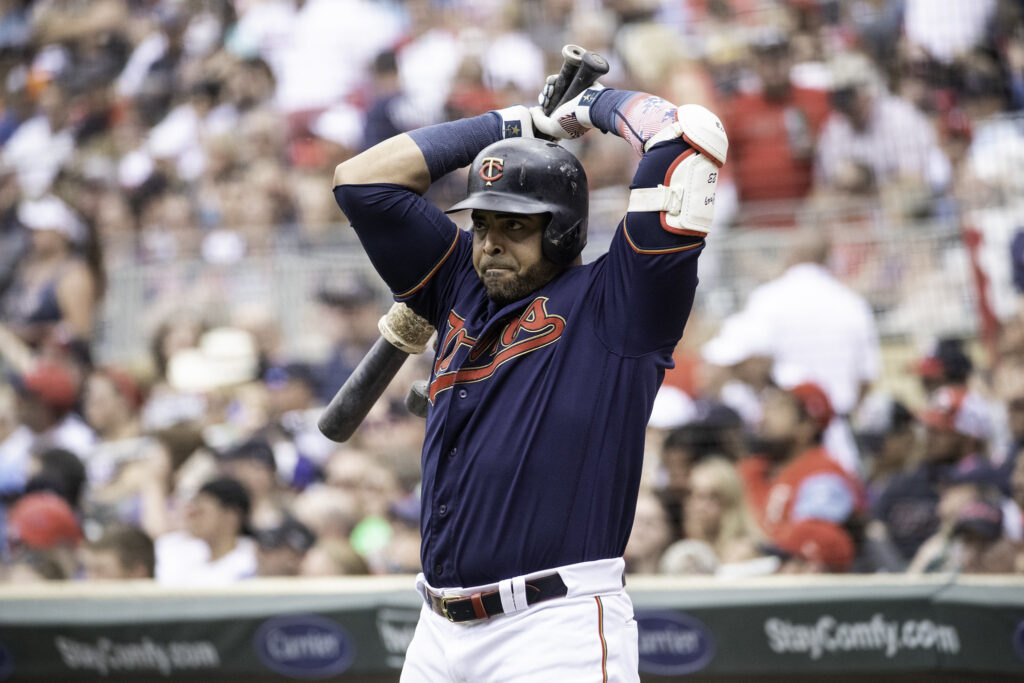Spring training has arrived for the Minnesota Twins and that means that several key members of the Bomba Squad will hit the field in Fort Myers to take their hacks and work on getting ready for the 2020 season…at least for four or five innings.
What happens after the regulars leave the field may be some of the more intriguing developments in spring training as the Twins look to build up their depth at the major-league level or try to get a better idea of what they have in the lower levels of their organization.
Nick Gordon
Gordon came into the Twins organization as a highly regarded prospect after being selected fourth overall in the 2014 MLB Draft. With all the tools to be an elite defender, some pegged him as a high-ceiling prospect if he could get his bat going and with the Twins having a dearth of middle infield prospects, many expected to see him in Minnesota by now.
But life comes at you fast and Gordon is no exception. The Twins depth chart in the middle infield is now loaded with talent as Jorge Polanco has broken out as an All-Star shortstop and Luis Arraez has hit his way through the organization to be the projected starting second baseman on opening day.
While others around him have flourished, Gordon has plodded along, hitting .276/.329/.385 with 25 HR and 293 RBI in six minor-league seasons. Injuries have played a big role in stunting his growth, however, as the 24-year-old played in just 70 games for Triple-A Rochester but still hit .298/.342/.459 with 4 HR and 40 RBI.
Gordon has a pair of minor league options remaining, but it is imperative he plays well as Royce Lewis and potentially Wander Javier are higher-rated middle infield prospects. If he can impress, he could be a defensive upgrade over Polanco and Arraez while also adding some base-stealing ability with 102 stolen bases on 146 attempts.
Fernando Romero
Remember when there was a big-time buzz around Romero? He was a top-100 prospect both by MLB Pipeline (68th) and Baseball Prospectus (97th) heading into the 2018 season and after going 2-1 with a 1.88 ERA and a 9.4 K/9 ratio, it looked like the Twins had a budding superstar on their hands.
Unfortunately, that stretch masked the issue of his control with roughly 4.1 walks per nine innings. Things didn’t get better from there as Romero has gone 1-2 with a 5.95 ERA in his last 21 appearances and a move to the bullpen last season didn’t help matters where he posted an 7.07 ERA and unhealthy walk rate.
Part of this could have been a new reliance on his sinker as opposed to his fastball. While his sinker clocked in at 97.1 mph at Statcast, it somehow lost a ton of movement, decreasing by nearly seven inches vertically. Overall, Romero lost movement on all of his pitches, going from the upper percentiles to an average pitcher in one winter.
With an offseason to digest, it’s possible that Romero can fix what ailed him in 2019. He’s still a young at 25 years old and with a 96.6 mph four-seam fastball that ranked in the 95th percentile last season, there’s enough to work with to turn him into a solid if not dominant reliever.
Gilberto Celestino
When it comes to Twins’ outfield prospects, you’ve probably heard about the ability that Trevor Larnach and Alex Kirilloff possess, but another name could be on his way to joining a suddenly crowded group at the top.
Celestino came to the Twins organization in the trade that sent Ryan Pressly to Houston. And while that trade hasn’t worked out well at all for the Twins, Celestino is something of a wild card as far as the Twins’ future plans go.
At just 21 years old, MLB Pipeline’s scouting report noted that he is an excellent defender, but the Twins are simply waiting for his bat to come around. His performance at Low-A Cedar Rapids (.276/.350/.409, 10 HR, 51 RBI) was encouraging in that respect, but he still needs plenty of seasoning before his major league close-up.
Celestino isn’t going to break camp with the Twins and although he’s on the 40-man active roster, that was to protect him from last winter’s Rule 5 draft. But while many eyes are going to be on Kirilloff and Larnach, Celestino could be an interesting study himself as he looks to force his way into the Twins future plans or become an enticing trade chip this summer.
Jhoulys Chacin
When the Twins signed Chacin to a minor league deal last month, the assumption was that he would slot in as the fourth starter and leave a battle royal between Lewis Thorpe, Devin Smeltzer, and Randy Dobnak for the final spot in the rotation. But the Twins then acquired Kenta Maeda and Chacin joined what could be an interesting battle throughout spring training.
Most recently, Chacin was batted around with the Boston Red Sox. However, he won 15 games for the Brewers in 2018 and a lot of his troubles began with a lack of movement on his fastball, which maintained velocity.
No one is expecting a Cy Young season out of Chacin, but he could at least be a solid holdover until Michael Pineda (suspension) and Rich Hill (elbow) are ready to take the mound. The early weeks of spring training will be particularly interesting to see what adjustments pitching coach Wes Johnson suggests and how it affects Chacin on the mound.
Brent Rooker
The Twins are leaning heavily on Miguel Sano’s ability to shift across the diamond from third base to third base, but a contingency plan could be needed if the latest defensive experiment doesn’t work out. Minnesota’s “Plan B” in this case could be to unleash Rooker, who has torn the cover off the ball since joining the organization in 2017.
After crushing 23 home runs in his final season at Mississippi State, Rooker hasn’t missed a beat at the plate, blasting 54 home runs in 259 minor league games. That total includes 14 bombs in 67 games last season before his year was cut short with a groin injury.
Now healthy, Rooker is looking to make an impact for a team that has shifted to add more power to its already impressive lineup. Although Sano stands in his way of a major league roster spot out of camp, a poor defensive outing could have the Twins thinking about calling up the 25-year-old either as a defensive replacement late in games or a thunderous bat on the bench.





